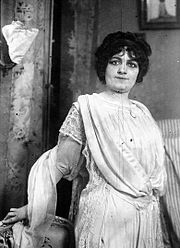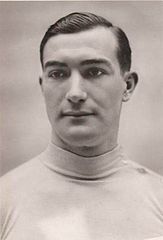Design
Design
Personality
Chart Properties
Your Cross represents the specific theme of your life. This cross embodies your unique potential & the lessons you're here to learn, providing a roadmap to fulfilling your life purpose.
We use the UTC birth time and date to do the calculations required to generate your Human Design chart.
Buy Tokens
Pay as you use, no expiry and no subscription required.Ted Kaczynski's Biography
American terrorist, called the Unabomber. He was taken into custody on April 3, 1996 with overwhelming evidence of his guilt.
Kaczynski was a gifted child but was shy and aloof. As an infant, he was hospitalized for several weeks and the hospital staff discouraged the parents from visiting their child and prevented them from holding him in their rare visits. He reportedly was never the same. He excelled in school, skipping two grades and graduating at age 16. He obtained his bachelor’s degree from Harvard University in 1962, with a major in mathematics, later earning his master’s and Ph.D. in mathematics from the University of Michigan. He landed a fellowship grant to conduct research and published several papers. In 1967, he landed an assistant professor’s position with the University of California at Berkeley. He resigned suddenly and without explanation in 1969, moving to a remote shack, living on very little, obtaining odd jobs when he needed money, and receiving a bit of financial support from his family.
In May 1978, a bomb was sent to a professor at Northwestern University. A security guard opened it and sustained minor injuries. Several bombs were sent by mail to others but did not cause much injury until December 11, 1985 when a computer store owner was killed. In 1987 a similar incident occurred and he was spotted wearing a hooded sweatshirt but not identified though sketches appeared in major newspapers. On June 24, 1993 a Yale University computer science professor with a distinguished reputation was sent a bomb and was injured when it exploded. The person who was then called the Unabomber sent a letter to the New York Times proclaiming that an anarchist group was responsible. Additional people were killed by these bombs on December 10, 1994 and on April 24, 1995, with Kaczynski mailing several letters to former victims, which became known as the “Manifesto.” The still unidentified Kaczynski demanded that this 35,000-word “Manifesto” were printed in the newspapers, he would quit his bombing campaign. The document, arguing that technological progress was harmful and must be stopped” was published in the New York Times and Washington Post in September 1995. http://partners.nytimes.com/library/national/unabom-manifesto-1.html
Kaczynski’s younger brother David recognized the writing style and ideas and after an anguished debate with himself, reported his brother to the police. The unabomber was arrested on April 3, 1996 at his cabin in a remote part of Montana. Lawyers tried to convince him to use the insanity plea, and a psychologist diagnosed paranoid schizophrenia but Kaczynski refused to plead insanity. He pled guilty on January 22, 1998 to avoid the death penalty. Although he later retracted his guilty plea, he was found guilty and sentenced to life imprisonment with no hope of appeal.
Kaczynski has been an active writer in prison. The Labadie Collection, part of the University of Michigan’s Special Collections Library, houses Kaczynski’s correspondence from over 400 people since his arrest in April 1996, including carbon copy replies, legal documents, publications, and clippings. The names of most correspondents will be kept sealed until 2049. Kaczynski has also been battling in federal court in Northern California over the auction of his journals and other correspondence. On January 10, 2009, the United States Court of Appeals for the Ninth Circuit in San Francisco rejected Kaczynski’s arguments that the government’s sale of his writings violates his freedom of expression. His writings, books, and other possessions were sold online, and the money raised was sent to several of his victims. The auction concluded in June 2011, and raised over $232,000,
Kaczynski’s cabin was removed and stored in a warehouse in an undisclosed location. It was to be destroyed, but was eventually given to Scharlette Holdman, an investigator on Kaczynski’s defense team. It is on display at the Newseum in Washington, D.C. as of July 2008. In a three-page handwritten letter to the United States Court of Appeals for the Ninth Circuit, Kaczynski objected to the public exhibition of the cabin, claiming it was being exhibited despite victims’ objections to being publicly connected with the UNABOM case.
David Kaczynski, Theodore’s brother, who turned him in to the FBI, has never received a response to the monthly letters he sends to Theodore in prison, as of 2007.
In 2010, a collection of his essays and a corrected version of the Manifesto were published by Feral House, under the title Technological Slavery.
On May 24, 2012, Kaczynski submitted his current information to the Harvard University alumni association. He listed his eight life sentences as achievements, his current occupation as prisoner, and his current prison address.
Link to Wikipedia biography
Ted Kaczynski
Your Cross represents the specific theme of your life. This cross embodies your unique potential & the lessons you're here to learn, providing a roadmap to fulfilling your life purpose.
We use the UTC birth time and date to do the calculations required to generate your Human Design chart.







